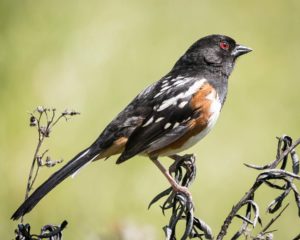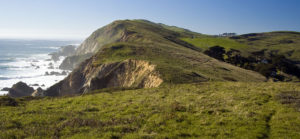This story originally appeared in bioGraphic, an online magazine about nature and sustainability powered by the California Academy of Sciences.
Photographs by Sarah Killingsworth
Point Reyes sits at the western edge of Marin County, California, a pick-axe shaped peninsula that juts between the pounding waves of the Pacific. It’s a landscape of stark beauty; a patchwork of windswept headlands, broad leeward bays, wildflower-strewn meadows, and dripping evergreen forest. State and federal agencies list more than a hundred plant and animal species within the park as threatened or endangered, among them the California red-legged frog (Rana draytonii), western snowy plover (Charadrius alexandrinus nivosus), and coho salmon (Oncorhynchus kisutch). This natural richness draws around 2 million visitors a year.
In 2013, one of them was Diana Oppenheim. A lean 27-year old with dark hair and an open face, Oppenheim had just moved to the Bay Area to work as a full-time yoga teacher. She’d brought with her a partner who specialized in coffee roasting, as well as degrees in environmental policy and urban planning, and a keen love of the natural world. Within a few months of her arrival, she took a tent out into the 28,744-hectare (71,028-acre) Point Reyes National Seashore for her first-ever camping trip. The morning after an all-night rainstorm, she opened the tent flap to behold great Douglas fir trees, hanging lichen glistening in the dew. Birdsong rang over the ocean’s restless murmur. From that moment, she was hooked on the park. “I hiked on every trail, and I camped at every campground, and I just fell more and more in love with the wildlife there.”
She was especially taken with the tule elk (Cervus canadensis nannodes), a California subspecies named after the native sedge on which it feeds. Sandy-coated, with distinctive white rumps and bushy manes, they are the smallest American elk — bulls weigh in at an average of 200 to 315 kilograms (450 to 700 pounds) — and the only subspecies unique to California. At Point Reyes, Oppenheim would watch the elk browse and wallow in the pasturelands. She’d listen to strutting bulls bugle across the hillsides, wisps of vegetation tangled in their short-tined antlers, guarding harems of alert females.
At first, Oppenheim saw the elk as a part of the landscape, symbols of the wild grasslands of California’s past. But as she began volunteering in the park in 2016, helping to restore coastal landscapes battered by invasive plants, her affection for them as charismatic animals deepened. On New Year’s Eve, 2017, she stood and watched a herd of elk sprint down a hillside, a dozen pale shapes flitting in unison down a shadowy green hillside. The sight struck something within her, she said, like a conversion experience. “To see a whole herd running like that, it was like… what I was doing in Point Reyes started feeling like it had way more meaning. It was around that point I asked a ranger about the signs.”
The signs — “Elk Fences Now!” —were everywhere on the Marin County roads around the park, and Oppenheim passed them every time she drove in to volunteer. Now she learned that a free-roaming herd of elk had been wandering onto park ranchlands, upsetting cattle ranchers who run cows on leases that cover a third of the seashore’s acreage. The ranchers wanted the elk fenced away from their cows. Oppenheim went home that night and plunged down an internet rabbit hole, reading warnings from environmental groups that the National Park Service (NPS), which manages Point Reyes National Seashore, might shoot the offending animals.
“I just remember being really confused, because it made no sense,” Oppenheim said. “It’s a national park, and they’re all about protecting and preserving wildlife. That’s the point of national parks … I thought it couldn’t be true.”
But it was. Soon, Oppenheim had joined a years-long public battle over Point Reyes’ elk, one that split the community along unexpected cultural fracture lines. The fight was, ostensibly, over the conflicting needs of elk and cattle in the park. But at the conflict’s heart lay more momentous disagreements — over native wildlife protection, agricultural heritage, and the future of our shared public lands.
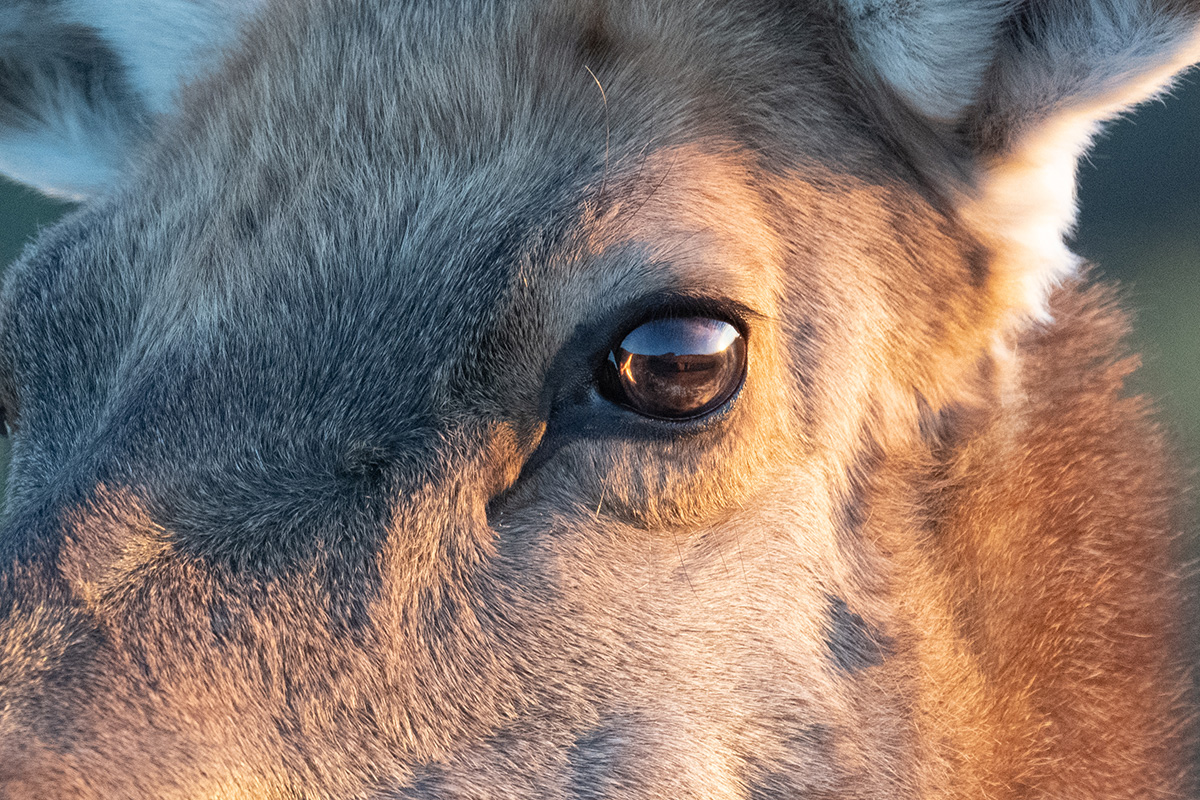
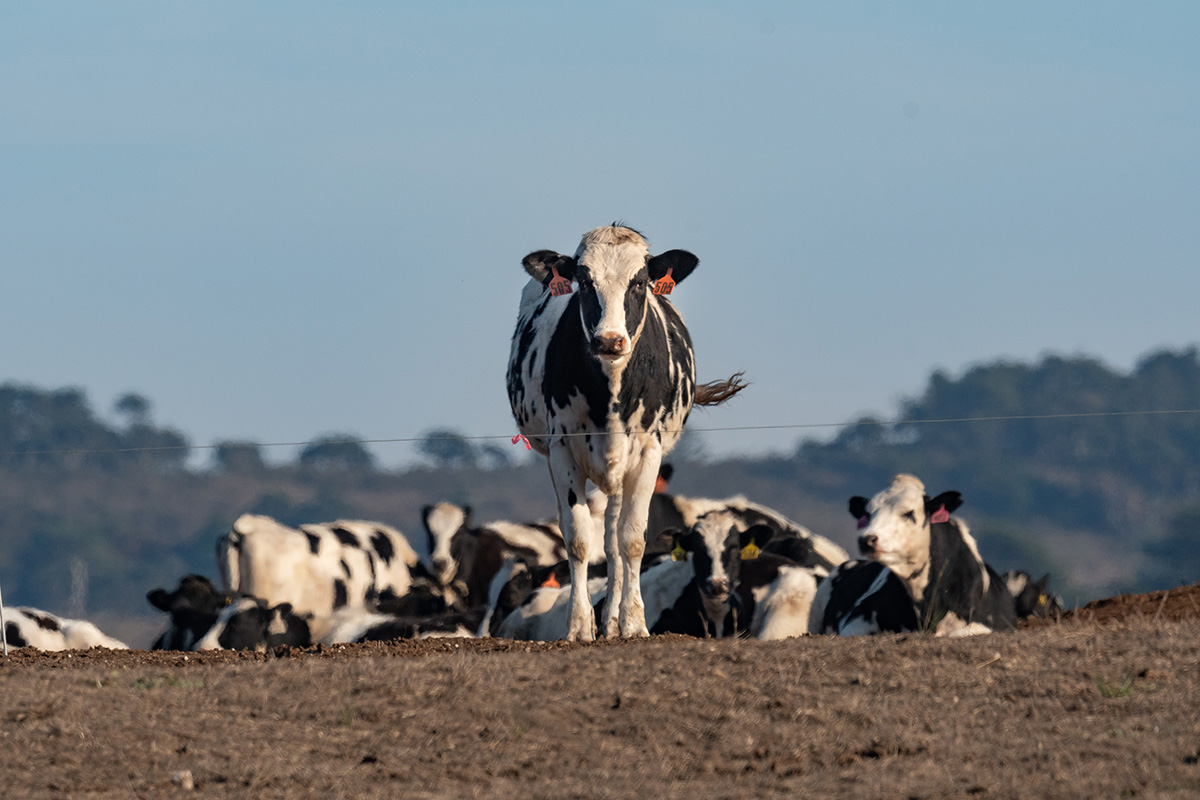
According to the NPS, half a million tule elk once ranged across California, from the Bay Area to the foothills of the Sierra Nevada mountains. But as the state’s human population boomed in the wake of the 1849 gold rush, cattle spread across the elk’s native pasturelands and hunters fanned out through the hills, shooting every elk in sight. By the 1860s, the herds had vanished. Game conservationists assumed the elk had gone extinct.
In 1874, however, a game warden named A. C. Tibbett learned that a San Joaquin cattle baron, Henry Miller, had discovered a handful of elk on his property and reestablished a small herd. The years that followed were filled with failed attempts to transplant the elk and raise their numbers. By the 1960s, California conservationists had managed to reintroduce a few small elk herds — a combined 412 animals — in grassland reserves scattered across California. In 1976, Congress passed a resolution directing federal agencies to reintroduce tule elk populations on federal lands, among them the newly formed Point Reyes National Seashore.
Elk wouldn’t be the only ungulates feeding on the park’s perennial grasses. Cattle had been there since the early 19th century, reshaping the landscape through their grazing and the invasive plants they carried in their fur and waste. The cattle lands at Point Reyes now run down the length of the park’s westernmost peninsula, a 7,285-hectare (18,000-acre) spread of dairy farms and beef ranches that cluster against the shallow bays of the Drakes Estero. Drive the park’s winding roads and you’ll see miles of fenceline; beyond, a population of more than 5,000 cattle still graze the shortgrass meadows. Historic ranch buildings and barns—some preserved, some still in operation — dot the green hillsides. Among them is the G Ranch, a verdant stretch of grassland bordering Drakes Bay. The tract is leased to rancher Kevin Lunny, a silver-haired man with a craggy face and a fondness for baseball caps.
Lunny is a third-generation rancher: His family came to Point Reyes in the 1940s, snapping up a parcel of land from the remains of the Shafter/Howard dairy operation, a massive network of tenant farms and ranches that once dominated the peninsula. By the 1960s, the Point Reyes ranchers were struggling with fluctuations in the dairy market and rapid development in the county. Fearing that subdivisions would take over the windy pasturelands, they teamed up with conservation groups like the Sierra Club to push Congress for some sort of legal protection for the land.
In 1962, Congress established the 14,165-hectare (35,000-acre) Point Reyes National Seashore. At first, the ranchlands remained in private hands within the larger park boundaries, but a decade later, Congress appropriated $57 million to buy the remaining land outright and create one contiguous, protected park. The ranchers negotiated the sale on the condition that they be granted 20- to 30-year leases at below-market rates to continue working their parcels.
According to the legislation, Point Reyes was designed not only to preserve natural landscapes and native wildlife for the public, but also to protect and showcase the “cultural heritage” of the ranchers who had occupied the land for two centuries. Neither the original legislation nor its amendments, however, guaranteed commercial ranching’s future in the park, leaving the decision to extend the ranch leases to the Secretary of the Interior. As those leases began to expire in the early 1990s, though, both Democratic and Republican administrations continued to offer the ranchers five- and ten-year extensions.
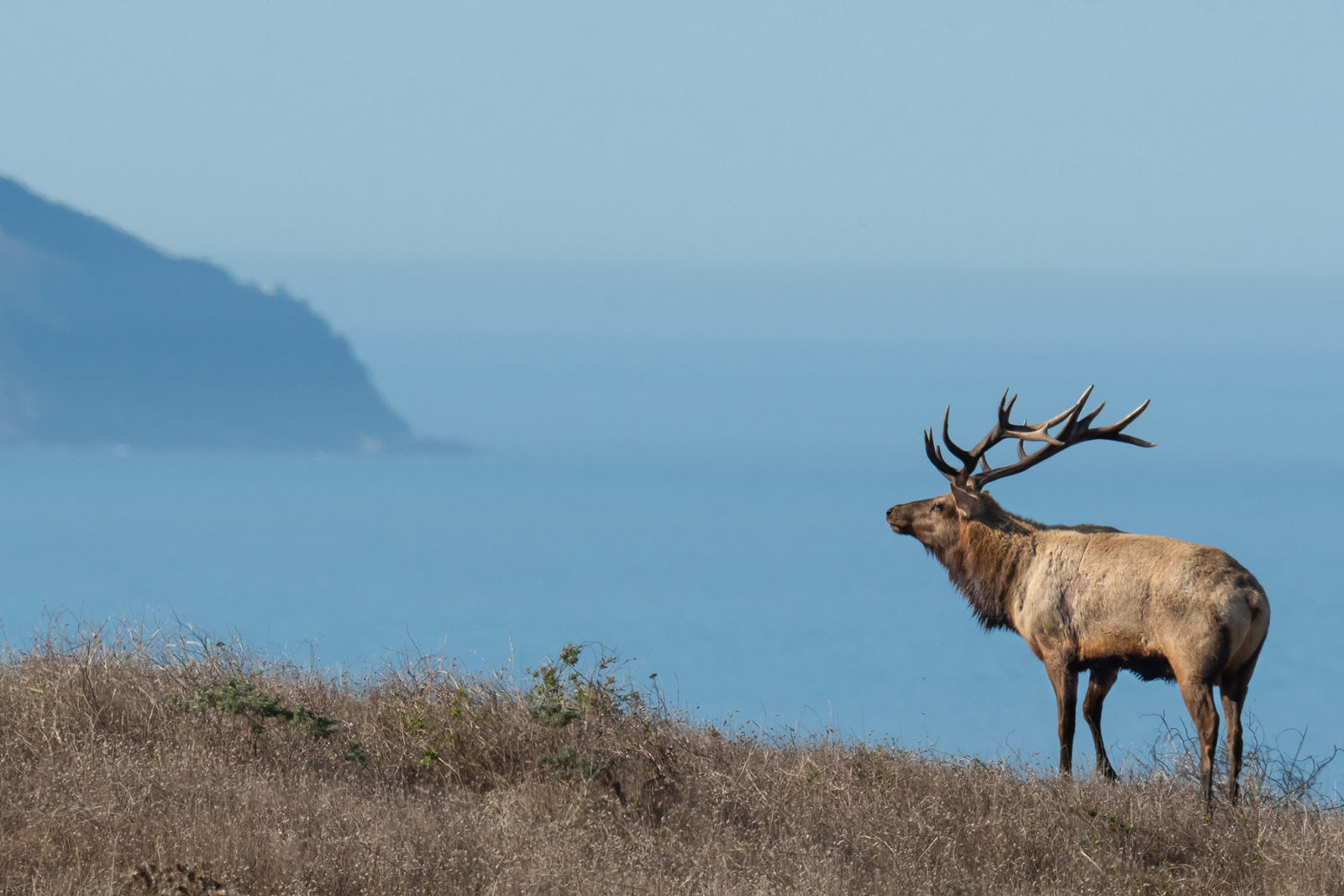
In 1978, the first tule elk arrived at Tomales Point, a fenced-off stiletto of land at the park’s northernmost edge that is surrounded by pounding breakers. To repatriate the elk, the park revoked the lease of Mervyn McDonald, the rancher occupying the land, and installed the elk behind a tall fence. At first, the elk struggled. Some of McDonald’s cattle remained on the land until 1980; in the interim, the elk had to compete for feed on depleted, overgrazed soils, and they caught Johne’s disease, a chronic, and sometimes deadly, bacterial infection carried by cattle that scars the lower intestines and makes it difficult for animals to absorb nutrients.
But by the late 1990s, elk numbers had rebounded, bolstered by a series of wet winters and a lack of natural predators. Today, an estimated 5,700 tule elk live in 22 herds across California, mostly on state parklands. While not numerous compared to historical populations, the elk’s return has generally been held up as a conservation success story: an iconic animal brought back from the lip of extinction. At Point Reyes, the herd had grown to 550 animals by 1998. Visitors flocked to the Tomales Point enclosure to watch the bulls lock antlers during the summer rut, but managers grew concerned that the herds had grown too large to survive on the limited pasture available to them. That year, wildlife officials decided to release 28 of the Tomales animals into the Limantour Wilderness, a stretch of marshland and beach near the ranchlands, hoping to establish a more natural, free-ranging herd.
In this, they succeeded: Soon, some of the elk free-ranged right out of Limantour and into the Drakes Beach dairies and pasturelands. The Drake’s Beach herd, as this new, unintended herd came to be known, made life difficult for the ranchers — knocking down fences, bullying cattle away from feed, and competing with them for water. At first the park helped chase the animals away. But within a few days of hazing or relocation by wildlife officials, most of them went right back to the ranchlands. It wasn’t an option to move the animals outside the park, because they now carried Johne’s disease. Ranchers pressed the park to place the elk behind a fence in the Limantour Wilderness, or to kill any that wandered onto the ranch leases. The park, however, could not fence or cull the elk without official Interior Department policy, a process that would require years of analysis and public comment. By 2002, says Lunny, the park simply gave up. “We don’t know why. There’s no paper trail to this. They just stopped removing them.”
The elk weren’t Lunny’s only beef with the Park Service. In 2005, he had purchased the Drakes Bay Oyster Company, a business operating on land that the park planned to return to wilderness in 2012. Lunny had known that the lease was finite, but gambled that he’d be able to get the same sort of extension that cattle ranchers in the park had received year after year. He did not. Furious, Lunny sued, arguing that the park was colluding with environmentalists to kick him off the seashore. The ensuing fracas drove deep rifts in the community, drawing in Koch industry lawyers and setting locavores and sustainable ranching advocates against conservationists and state and federal science agencies.
Point Reyes ranchers — already upset by what they viewed as the Park’s unwillingness to deal with the elk — rallied behind Lunny, concerned that their cattle leases were next. So did U.S. Senator Dianne Feinstein, who in 2012 pressed the Department of the Interior to renew Lunny’s oyster lease, offer more secure tenure to the park’s ranchers, and address the issue of the Drakes Beach herd.
While then-Secretary of the Interior Ken Salazar — himself a former cattleman — stood firm on the matter of the oyster farm, he did attempt to allay ranchers’ fears by initiating a planning process for the issuance of new 20-year ranch leases. As part of that process, he also promised that the Interior Department would set a clear policy for controlling the Drakes Beach elk — lethally, if necessary.
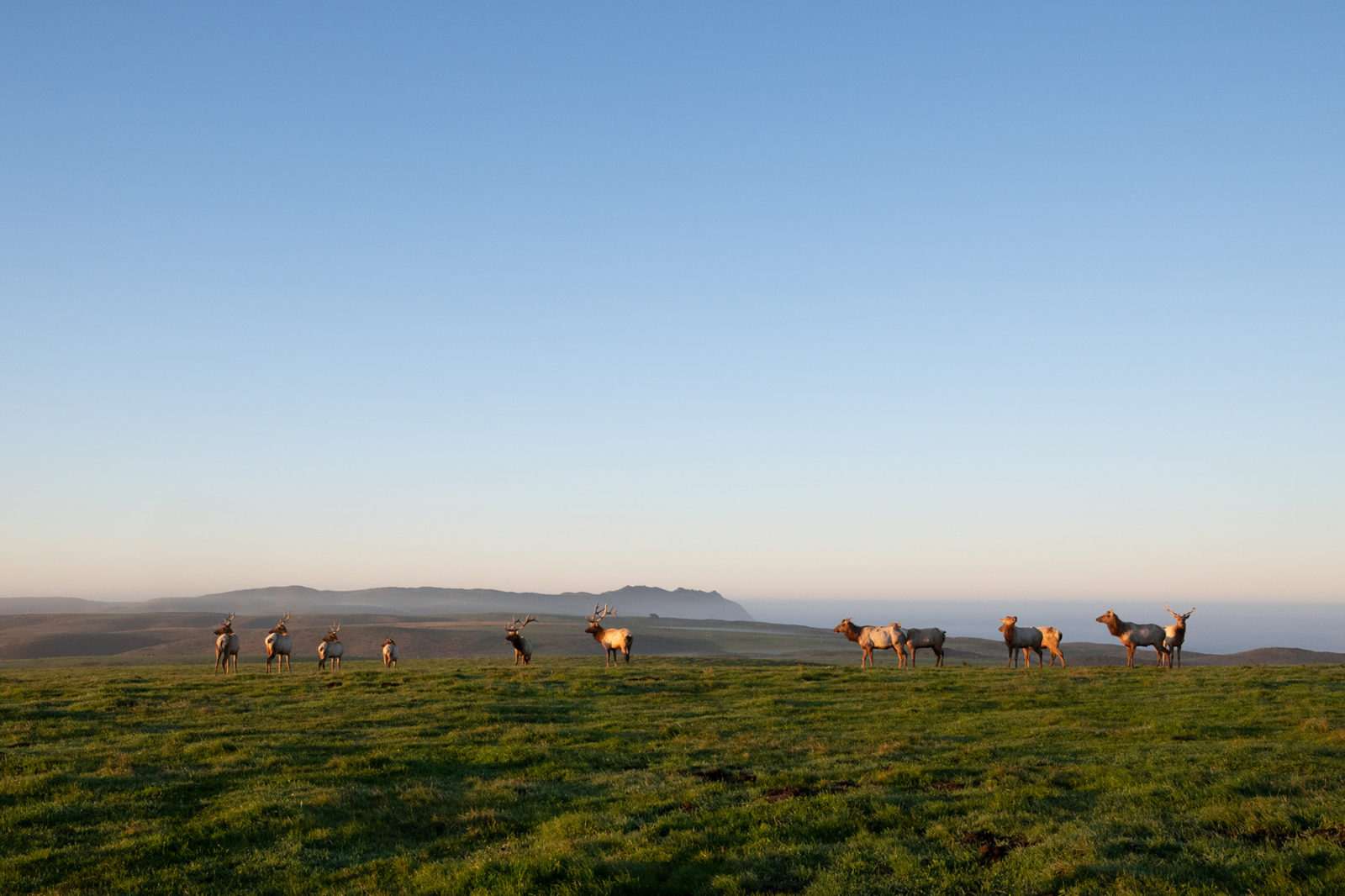
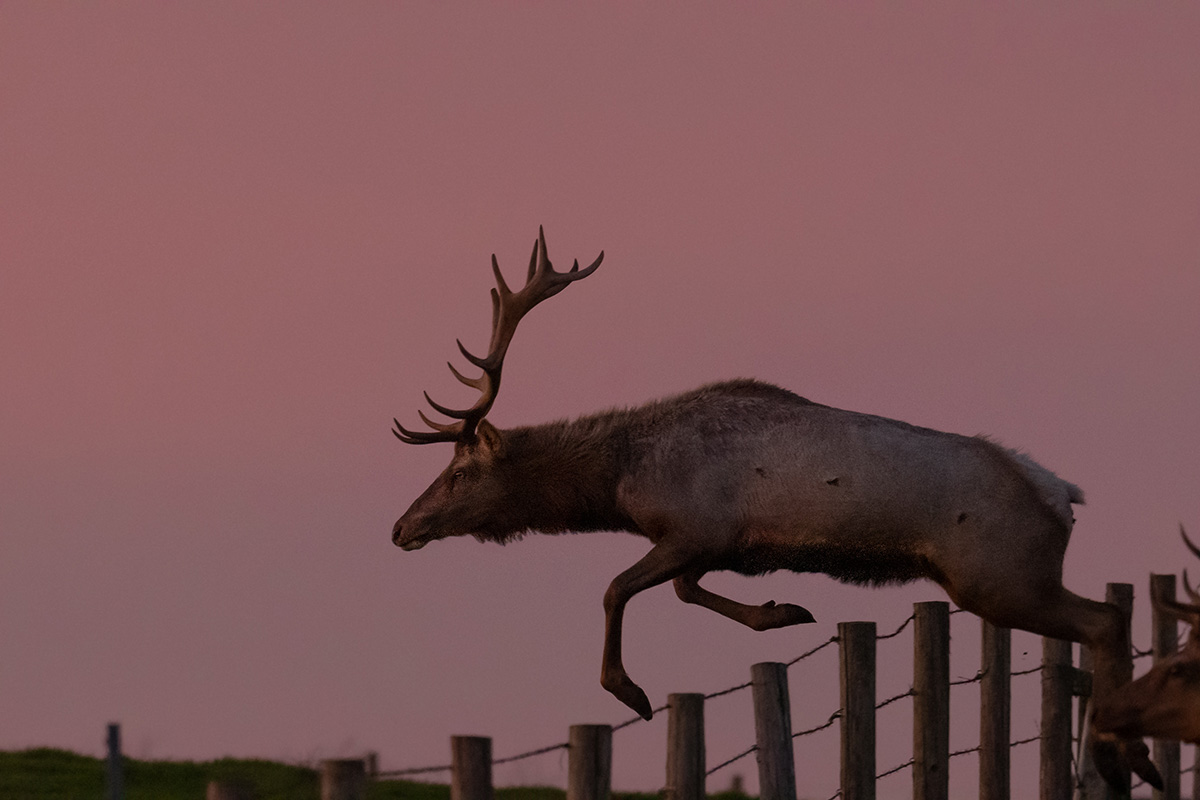
In the meantime, a brutal multi-year drought settled over the state. Beginning in 2012, the forage at Tomales Point browned and wilted; the mud at the bottom of old cattle ponds cracked in the sun. While cattle and the free-roaming elk in the park were able to ride out the worst of the drought by taking advantage of full stock ponds and free-flowing streams, the 540 elk behind the fence at Tomales Point had to make do on brittle grass and a few freshwater seeps. Many died. By December of 2014, a park census showed that the herd’s population had been nearly halved, dwindling to 286 animals.
The Tomales Point herd had always been intended to be self-regulating, according to park outreach coordinator Melanie Gunn, with populations rising and falling according to available resources. But public reaction to the deaths was swift and furious. Bay Area environmental and animal-rights activists saw the endlessly renewed ranch leases, along with Lunny’s attempt to skirt the terms of his oyster lease, as emblematic of rancher entitlement. The image of helpless tule elk dying behind a fence, while the park’s cattle prospered, poured salt on the wound.
Among the outraged was the late Huey Johnson, former Secretary of Resources for the state of California and founder of the Resource Renewal Institute (RRI), a Marin-based nonprofit. Johnson penned an op-ed in the Marin Independent Journal in 2015 accusing the park of “subsidizing ranchers’ private profit” with taxpayer money. That same year, he dispatched one of his employees, Chance Cutrano, to look for evidence of park mismanagement.
Cutrano, a narrow-featured man with glasses and a trim goatee, dug into park documents and visited the ranch leases, walking through trampled and eroded land, passing stinking mud-fields and steep, washed-out gullies. He stumbled across illegally buried cow carcasses and photographed cattle grazing in sensitive riparian corridors. He watched ranchers drive ATVs over sensitive pastureland and spread manure on fields for short term fertilizer; he found illegally-dug waste disposal pits and cattle bone piles, drawing clouds of ravens (Corvus corax). The elk deaths at Tomales Point, he concluded, were the tip of the iceberg. The Park was rife with environmental mismanagement. “There were issues with lack of lease enforcement,” recalls Cutrano, who now serves as director of programs at RRI. “There were issues with water pollution, because of the large amounts of manure.”
The damage from the cattle was not limited to the lease lands; it could be found all over Point Reyes. A 2013 NPS Coastal Watershed Assessment found that the peninsula’s waterways and coastlines were heavily polluted by blooms of E. coli fueled by dairy cattle dung. Other research documented additional troubling issues: A 2002 U.S. Fish and Wildlife Service study raised serious concerns about the impact of Point Reyes cattle operations on endangered species like the snowy plover, whose nests were plundered by the ravens attracted to stray feed. And a 2015 NPS rangeland study found that between 2012 and 2015, cattle had overgrazed nearly a third of the National Seashore.
Ranchers, however, argued that cattle benefit the land, helping to create the wide-open grasslands that give the park its character — the same sweeping vistas that Oppenheim fell in love with when she first visited two years earlier — and controlling invasive plants. “The areas where grazing’s been removed at Point Reyes,” says Lunny, “the brush is eight feet high, and you can’t even walk through it.
In fact, tule elk play a similar “critical role in maintaining open grasslands,” according to Sonoma State University researchers, by browsing, threshing native shrubs with their antlers in territorial displays, and trampling invasive vegetation. According to Laura Cunningham, a wildlife biologist with Western Watersheds Project, free-roaming elk populations also create less erosion and produce less manure than more sedentary cattle herds. Gunn, the park spokeswoman, adds that tall brush in meadows is a natural feature of ecological succession.
Each side sees the land at Point Reyes — its best and highest use — much the way they see the natural world. Environmental activists seek to recreate a fully public wilderness, managed for the benefit of native ecosystems and harkening back to the days before cattle transformed the grasslands. For ranchers like Lunny, the land represents tradition, heritage, something to be used and profited from. Lunny notes that ranchers can use techniques like rotational grazing — moving cattle from field to field—to let the land recover. Elk, meanwhile, go where they want. “We can manage cattle grazing. We can’t manage elk grazing,” Lunny says.
In February of 2016, as the park continued its planning process, a coalition of three environmental organizations — Cutrano’s Resource Renewal Institute, the Center for Biological Diversity, and the Western Watersheds Project — sued the NPS, arguing that it was moving too slowly to update its policies. In 2017, the groups reached a settlement: The Park Service would not renew any ranch leases until they released an amendment to their General Land Management Plan, which would happen within four years. And in creating the amendment, they would be required to consider scaling back or evicting the ranches entirely.
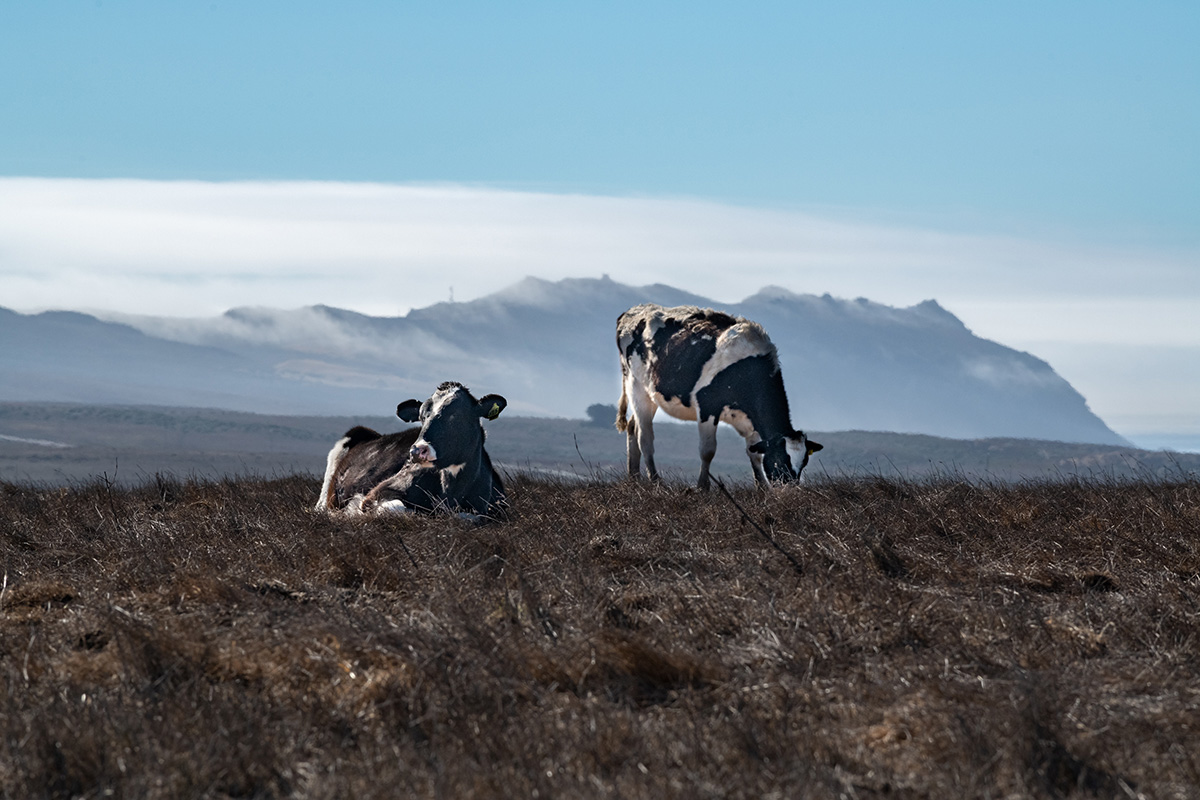
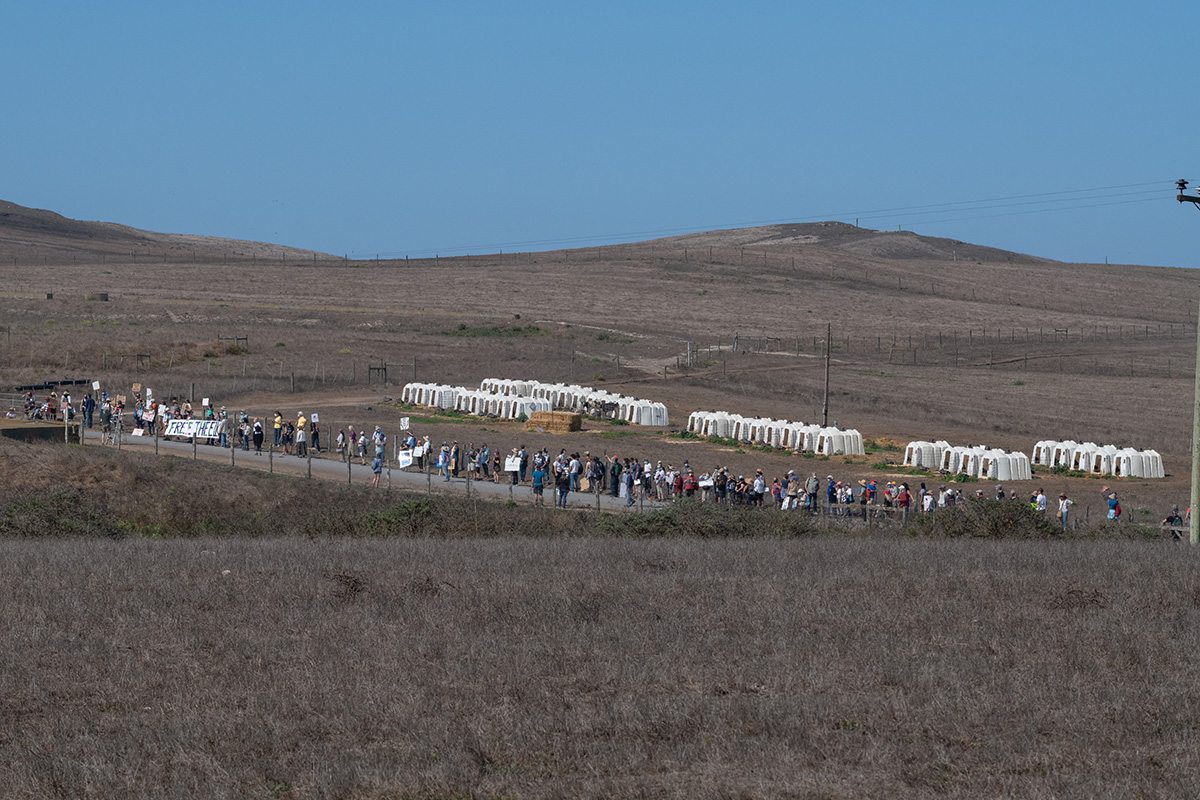
In June 2019, Diana Oppenheim led a team of 10 other volunteers onto the white dunes of Point Reyes’ Abbotts Lagoon. They spent the morning pulling invasive European beach grass, digging their fingers into the cool sand, salt wind whipping at their hair and faces. As the sun rose higher, Oppenheim, wearing a red “Save the Tule Elk” tank top, guided them through a series of yoga poses on the beach.
Oppenheim’s ongoing service projects had earned her a “Volunteer of the Year” award from the park in 2018. But that same year, she’d also partnered with other activists to form the ForELK campaign, working alongside local and national environmental groups to push the park to prioritize elk over cattle and ranchers. Oppenheim’s group set up tables at festivals, farmers’ markets, and grocery stores in the Bay Area, hammering home a simple message; National parks like Point Reyes should be managed for native wildlife. If it was a choice between elk and ranchers, then the ranchers had to go.
At the yoga-and-weed-pulling event, Oppenheim linked her volunteer work to the struggle over the elk. “This is what I think the park should be doing,” she said, her expression serious, in an Instagram video, investing time and resources into restoring wildlife and ecosystems.” It wasn’t a revolutionary statement, but the blowback was nonetheless immediate; a few days later, the park’s volunteer coordinator warned Oppenheim that she couldn’t reference park volunteer work on social media posts and needed to delete the video. Oppenheim refused, offering instead to add a disclaimer that her views were her own. The park management was polite, she says, but firm: Stop mentioning her volunteer work as she campaigned against cattle ranching in the park, or they’d ban her from volunteering. “I said no. You have no right to tell me what to say,” she recalls. They banned her from volunteering.
As with the oyster skirmish, the battle over the tule elk split the liberal Bay Area community. Elected officials like Senator Feinstein and Marin’s representative in Congress, Jared Huffman, lined up alongside the ranchers. Huffman, indeed, even teamed up with Utah Republican Congressman Rob Bishop, an outspoken opponent of public lands, to introduce a 2018 bill to renew the Marin ranch leases for 20 years and force the removal of the Drakes Beach herd. The bill passed the then-Republican controlled House but died in the Senate.
The Bay Area’s locavore farming community also rallied around the ranchers, arguing that the park’s agricultural leases were vital to maintaining the Bay Area’s iconic organic, farm-to-table agriculture industry. The park’s ranches currently generate approximately $17 million in annual revenue—17 percent of Marin County’s total agricultural output. (This, however, represents only 0.01 percent of the tech-heavy region’s gross product.) “The Bay Area is a pretty informed group of consumers and they want to know where their food is from,” says David Lewis, Marin County director for the University of California Cooperative Extension. With the cattle and dairy industries struggling to stay afloat, the local food community also rallied around another rancher request in the plan revision: to permit chicken, sheep, goats, pigs, and row crops on the Point Reyes cattle lands, as well as to allow on-site meat processing, tourist farm-stays, and bed and breakfasts.
Oppenheim and her associates, meanwhile, held regular vigils of 40 to 60 people at the park’s visitor center each month throughout the fall and winter of 2019. They attended Congressman Huffman’s town hall meetings as well, holding up signs and peppering him with elk-and-cattle-related questions for which he supplied unsatisfying answers. ”He stuck to his talking points,” says Oppenheim.
Everyone expected the park to deliver its verdict in the spring of 2020. But in early March, COVID-19 arrived, and the National Seashore closed, remaining intermittently off-limits to all but local visitors for months. By late August, massive fires raged across the region, blanketing the coastline in smoke and turning the skies an eerie, hellish red. Active fire fronts smoldered a mile inland of Limantour beach, and elk and cattle moved along the rangeland like dark ghosts, fading in and out of sight among thick soups of smoke and fog.

As the coastlines blazed, the old stock tanks that sustained the Tomales Point elk began drying up, and activists photographed a half-dozen dead elk in the preserve. On the evening of August 30th, in an action partially planned by Oppenheim, a bucket brigade snuck through the fog-shrouded dark to Tomales Point, transferring water from one of their trucks to a 150-gallon trough they had carried into the elk enclosure. A few days later, the park removed it, arguing that there was still sufficient water. Rangers would, the Park Service promised, install a trough if elk needed more water later in the year.
On September 18th, the park released its General Land Management Plan Amendment. It gave ranchers almost everything they wanted: 20-year lease renewals, additional agricultural diversification, and the mandated culling of the free-roaming Drakes Beach Elk Herd down to 120 animals. (There are currently 138, meaning 18 would be culled.) Ranchers were happy with the decision on their leases, Lunny says, but not on the elk. Nearly all of the Drakes Beach herd would remain, and although the ranchers had requested that the Drakes Beach herd be rounded up and confined behind a fence in Limantour, the Park Service declined to do so. “I feel the wildlife folks really were heard,” Lunny says. “The Park service took their cries and said ok, we’re gonna keep [the elk] here.”
The elk activists were also unhappy. On September 29th, over 200 of them — faces masked against the spread of COVID — marched up the road of the McClure Dairy to protest the park’s decision. Robert McClure, the operation’s owner, let them onto his leased pasture and watched from the sidelines as speakers from several organizations climbed up onto a ladder, using it as a makeshift stage. Among them was Oppenheim. The COVID-induced economic crash, which gutted her yoga business, had forced her to move back to Detroit, but she had returned to Marin for the occasion. “This is the home of the tule elk, but look around and what do you see?” she asked the sign-waving crowd. “The National Park Service has failed this ecosystem. The National Park Service has failed the elk. And the National Park Service has failed us.”
The decision isn’t yet final; a number of federal and state agencies must first make sure the new plan complies with federal laws such as the Endangered Species Act. The Trump Administration had pushed at the end of its term to rush the process before Trump left office, but after more than 100 national organizations signed a January 7th letter of protest, the Park Service backed off and is now expected to publish its final decision later this year. And with a new administration overseeing the process, Oppenheimer, Cutrano, and other advocates have vowed to fight on.
The morning before the protest, Oppenheim drove up toward Tomales Point, wanting to take a moment in the park by herself. It was early morning, and gray clouds streaked the sky over the Pacific. Along the road, fields of dry grass and crumbling dirt stretched away. Beyond the fence, the elk were out grazing, their tawny-furred bodies silhouetted atop the hill. “I thought it was beautiful, the first time I saw it,” she recalls. “But knowing what I know now, it just looks sad.”


